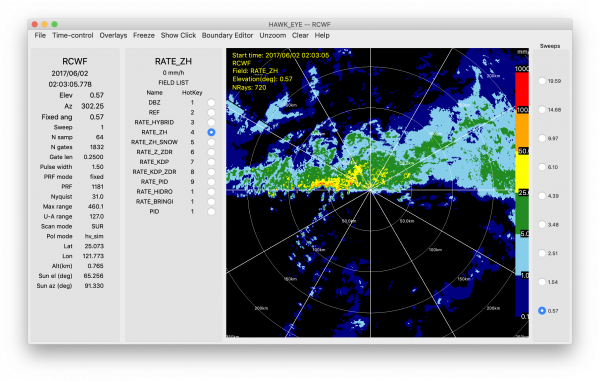Difference between revisions of "RadxRate equations"
From Lrose Wiki
| Line 13: | Line 13: | ||
===== '''PID-based estimates''' ===== | ===== '''PID-based estimates''' ===== | ||
| + | |||
| + | |||
| + | ===== '''References''' ===== | ||
| + | Berkowitz, D. S., J. A Schultz, S. Vasiloff, K.L. Elmore, C.D. Payne and J.B. Boettcher, 2013: Status of Dual Pol QPE in the WSR-88D Network. AMS 27th conference on hydrology, Austin, Texas, 2.2. [https://ams.confex.com/ams/93Annual/webprogram/Paper221525.html Link] | ||
Revision as of 00:47, 26 January 2021
Contents
Overview
The goal of RadxRate is to estimate the precipitation rate at each gate within a three-dimensional radar volume. RadxRate includes several equations for estimating precipitation rate, which can be tuned according to the specific environment and precipitation type. This page will walk through these equations.
Polarimetric-based estimates
R(Z)
Probably the most straightforward method of estimating precipitation rates, precipitation (mostly rainfall) can be estimated using an equation in the following form:
Many variations of this equation exist, depending on the precipitation conditions (e.g., convective vs stratiform, tropical vs midlatitude). An example of the estimated precipitation using a tropical version of this equation from northern Taiwan is shown in the image below. Since this particular example is from the lowest elevation angle, the echoes within ~150 km should all correspond to rain. Coefficients for Z-R relationships have been developed for dry snow, but aren't shown here given the warm environment near Taiwan.
R(Z, ZDR)
PID-based estimates
References
Berkowitz, D. S., J. A Schultz, S. Vasiloff, K.L. Elmore, C.D. Payne and J.B. Boettcher, 2013: Status of Dual Pol QPE in the WSR-88D Network. AMS 27th conference on hydrology, Austin, Texas, 2.2. Link
